Tales of the L.A. River
February 10, 2011
 To most Angelenos, it’s little more than a network of non-descript concrete channels slicing through the heart of urban Los Angeles between Canoga Park and Long Beach. But once upon a time, the Los Angeles River was a vast natural waterway that blessed the region with abundant supplies of water, and periodically cursed it with devastating floods.
To most Angelenos, it’s little more than a network of non-descript concrete channels slicing through the heart of urban Los Angeles between Canoga Park and Long Beach. But once upon a time, the Los Angeles River was a vast natural waterway that blessed the region with abundant supplies of water, and periodically cursed it with devastating floods.
That all changed when the Los Angeles Flood of 1938—one of our region’s worst natural disasters, destroying numerous properties and claiming more than 100 lives—also swept out the corrupt administration of Los Angeles Mayor Frank Shaw in the nation’s first mayoral recall. Exhausted residents called in the Army Corps of Engineers, which finally tamed the wild river by reducing it to the channelized floodway system we have today.
And yet, environmentalists and wild-river advocates still dream of what was, and what might be.
On Tuesday, February 15, at 7:30 pm, you can hear from one of them when writer Jenny Price shares her river stories at Temescal Gateway Park in the Pacific Palisades. The program is sponsored by the Santa Monica Mountains Conservancy and presented by the Mountains Recreation and Conservation Authority as part of their ongoing Chautauqua Series of educational presentations. It takes place at the park’s Woodland Hall, and both the 90-minute program and parking are free.
Temescal Gateway Park is located at 15601 Sunset Blvd. in Pacific Palisades. Full information and directions to the park may be found here.
Posted 2/10/11
Picture perfect at LACMA
February 10, 2011
Vogue editor Lisa Love visits LACMA for a behind-the-scenes peek at “Fashioning Fashion: European Dress in Detail, 1700-1915.” The exhibit opened in October, 2010, in the new Lynda and Stewart Resnick Exhibition Pavilion. For more information, visit lacma.org/resnickpavilion.

Bowled over in Hollywood—again
February 9, 2011

If you were lucky enough to grow up here, you’ve probably got some cherished memories of the Hollywood Bowl. If not, chances are you probably imagined what it would be like to experience just one concert—Sinatra! The Beatles! Hendrix! Heifetz!—under the stars at the storied amphitheater.
That kind of spellbinding magic, reaching across the years and the miles, has just been recognized again in the latest Pollstar awards. For the 7th straight year, concert industry professionals named the Bowl the nation’s “Best Major Outdoor Concert Venue.” The county-owned venue beat finalists that included the Gorge Amphitheatre in Quincy, Washington, and the Mann Center for the Performing Arts in Philadelphia. (Another L.A. institution, the Greek Theater, also was honored this year with the “Red Rocks Award for Small Outdoor Venue.”)
We’ve marked the occasion by taking a spin through some of the Bowl’s historic photos. Whether you’re a homegrown Angeleno or a transplant, we think you’ll find something here to surprise, amuse or just take you back in time. Also, check out the huge collection of archival photos and video snippets on the Bowl’s website that feature Frank Sinatra, The Beatles and an array of other classical and pop music performance greats. And to create some Bowl memories of your own, here’s this season’s concert lineup.
Posted 2/9/11
Vet squad learning new tricks
February 9, 2011
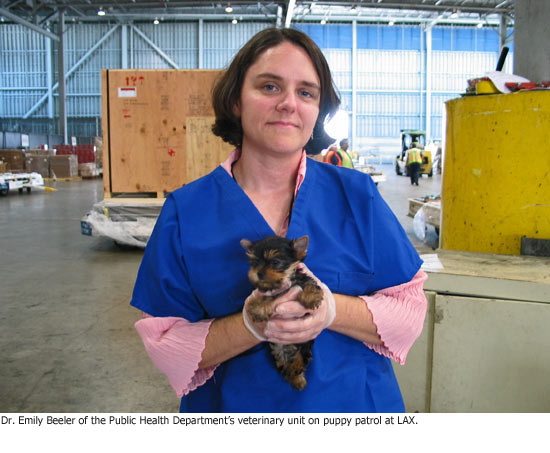 If it’s a jungle out there, Dr. Karen Ehnert and her staff are L.A. County’s safari guides.
If it’s a jungle out there, Dr. Karen Ehnert and her staff are L.A. County’s safari guides.
They know where the dogs are biting, where the rabid bats are hanging and where the raccoons have distemper.
They can tell when unscrupulous dog importers are bringing in underage puppies with bogus paperwork claiming vaccinations that never happened.
And, increasingly, they can see how the well-being of humans and animals is interrelated—for better or worse.
The multifaceted mission of the Department of Public Health’s little-known veterinary unit is testament to how times have changed for animals and humans alike in Los Angeles.
“Now that animals are becoming members of the family, sleeping in people’s beds, we need to create ways to help people improve their pets’ health, and improve their own health, too,” says Ehnert, 50, a UC Davis-trained veterinarian who’s been acting director of the unit since June. “There’s an incredible human-animal bond.” Walking and exercising family pets outdoors can also play a broader social role in the county, helping people “take back their communities,” she says. “There’s a huge public health benefit.”
The vet squad dates from a time when hoof-and-mouth outbreaks were bigger news than Hollywood gossip, and people thought of anthrax as a cattle disease, not a terrorist weapon.
A history of the department, written by Dr. Patrick Ryan, who retired last year, is full of fascinating and sometimes gruesome tidbits chronicling L.A.’s bygone livestock quarantines, tuberculosis-tainted dairy herds, disease-ridden slaughterhouses, garbage-swilling hogs and, during the Depression, roving rabid dogs attacking horses and cattle.
Well, L.A.’s no cow town anymore. And Ehnert and her unit are evolving to serve a metropolis in which people outnumber livestock, and canine rabies has long been wiped out, thanks to widespread vaccination programs. The last time a Los Angeles dog was reported to have had rabies was in 1962.
A primary mission of the team these days is still rabies control, but the culprits now are very different, with bats the likeliest to be infected, followed by skunks and foxes. This “Rabies Tales” comic, created by one of the department’s veterinarians, Dr. Emily Beeler, gives a good overview of how to handle exposure to a potentially rabid bat. (It also provides the welcome news that rabies shots are not given in the abdomen anymore.)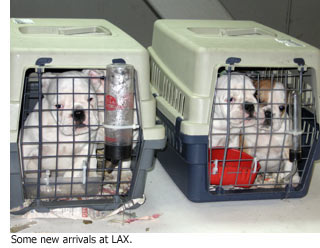
The unit takes reports on virtually every animal bite that comes to the attention of medical or law enforcement authorities in the county. It currently is working on a community-by-community analysis of where dog bites are most prevalent.
And it has an educational role, communicating with veterinarians in practice throughout the county and with the public at large about disease outbreaks and protective measures, including the importance of regular vaccinations to prevent many pet illnesses.
Lately, it’s been using the department’s Twitter feed to spread the word about how healthy human habits can lead to healthier pets. One recent Tweet focused on how smoking hurts pets.
It’s also preparing an online “Pet Health and Safety Quiz,” modeled on the department’s Food Safety Quiz (in which home cooks can test their food preparation savvy against the department’s standards for restaurant inspection and grading.)
What’s more, the vet squad has been a key player in a multi-jurisdictional effort called the “Border Puppy Task Force,” aimed at stopping the importation of sick and unvaccinated puppies through Los Angeles International Airport.
Ehnert said her team’s spot checks at the airport as part of that effort found that 40% of the large shipments of puppies coming through had falsified paperwork. The phony documents would claim, for instance, that the incoming dogs were four months old and had been vaccinated when in fact they were less than 8 weeks old—too young to have teeth, let alone effective vaccinations. In recent years, popular imported breeds coming through LAX have included English and French bulldog puppies from Colombia.
The vet squad currently is working on a proposal to turn its spot checks into a more regular monitoring arrangement, working in tandem with federal officials stationed at the airport.
The unit has undergone its share of changes over the years. Its lab was closed due to budget cuts in the mid-1990s. Its veterinary staff was shifted for a time to the Department of Animal Care & Control but later rejoined public health. Now budget cuts may once again affect the unit, which has 4 licensed vets and a registered veterinary technician among its 19 budgeted positions. Ehnert says seven of those slots are currently vacant due to retirements and leaves of absence.
The budget uncertainty hasn’t stopped the vet squad from looking ahead.
Ehnert is proposing a “2020 Healthy Pets, Healthy Families” initiative that would bring together veterinary educators, local vets, animal control agencies and public health officials with the goal of producing new standards for pet health by the year 2020. “Healthy pets can lead to healthy people,” Ehnert says in her proposal for the effort, intended as a pet-centric offshoot of the federal government’s Healthy People 2020 initiative.
“The idea is to create a model for the nation,” Ehnert says. “Nobody’s really talking about animal health and galvanizing the community.”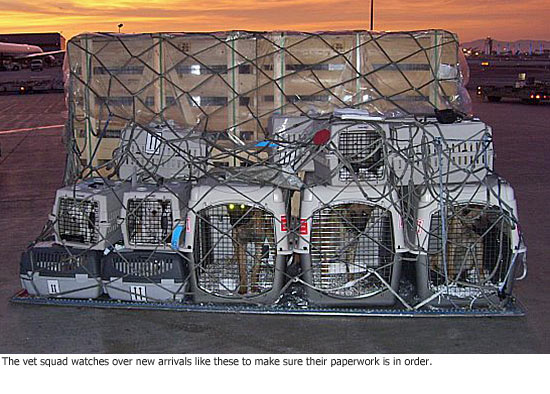
Posted 2/8/11
Avoid heartbreak this Valentine’s Day
February 9, 2011
 It’s the season for racing pulses and rising emotions, and the county’s Department of Consumer Affairs wants you to experience those symptoms in only the best of ways.
It’s the season for racing pulses and rising emotions, and the county’s Department of Consumer Affairs wants you to experience those symptoms in only the best of ways.
“But too often, scammers ruin what’s supposed to be a romantic holiday for vulnerable people,” says the department’s acting director Rigo Reyes, who warns that while it’s wonderful to open your heart, you should maintain a close grip on your wallet.
Here’s his department’s advice to consumers who don’t want to be lovelorn this Valentine’s Day:
Don’t click in haste when it comes to Internet matchmakers
Dating web sites are increasingly popular, but Reyes warns consumers to research their dating services and keep a tight rein on their identities. There is little in the law to prevent a service from delivering frogs when they’ve promised princes. “We had one lady, a senior, who ended up paying $35,000 to sign up for a dating service that didn’t pan out,” he says. “We tell consumers to be very careful, especially if you’re being charged large sums of money. California law gives you three days to cancel a contract, but often these companies string people along until the grace period has expired and it’s too late.”
Beware of solicitations from online sweethearts
Often, they’re a tip-off to a common form of fraud. “Generally the way these work is, someone contacts you and you make a connection, and you think you’re hitting it off,” Reyes says. “But then they ask for money, maybe for a plane ticket to come visit you, or they say they’ve had a health emergency and need financial help to get through it.” That kind of mooching isn’t a sign of true love. Once they get your money, they’ll be gone, he warns, “and the victim is left with a broken heart and a broken bank account.”
Don’t be suckered by email requests for your information
Valentine’s Day is a prime time for phishing scams, Reyes says. “The scammer sends you a phony email offering some relationship, or maybe offering to deliver flowers or candy to someone, and then they ask you to complete the transaction by entering your credit card information and personal details,” says Reyes. “Then they steal your identity.” Delete suspicious email. And if someone does manage to steal your identity, contact the Department of Consumer Affairs at (213) 974-9459. Their identity theft experts will help you resolve any charges the thief makes, stop new accounts from being opened in your name and fix your credit report, for free.
Don’t open e-valentines from strangers
Sad, isn’t it? But one of the more common scams involves booby-trapping electronic greeting cards with spyware and viruses. “You open the card, and it asks you to click on something inside, and then that sends you to a site that often asks you to download software,” says Reyes. Often the name sounds like a legitimate web site. “We had one where consumers were sent to something called ‘American Greetings’ or something,” says Reyes. “But all they’re doing while you click is installing something on your computer that’s going to cause you trouble later.” Fortunately, there are ways to thwart e-scammers. For a primer from Consumer Reports, click here.
Shop around if you’re planning to give jewelry and get an appraisal
Valentine’s Day is a big season for gold and diamonds, and Reyes says that every year, his department hears from consumers who were overcharged either in person or online for carats and quality. “It’s very difficult for consumers to resolve these complaints because the receipts often don’t reflect what they were verbally told by the salespeople,” says Reyes. So take time to do your homework, and consult an independent appraiser. “If you’re buying a $5,000 diamond, it’s good to invest a couple hundred bucks up front to make sure you get what you pay for, especially online.”
And if you find true love after all, the county can help you say, “I do”
Of course, some days are simply meant for romance. And if you manage to navigate the pitfalls, the county will be happy to help happy couples get hitched for Valentine’s Day. The Registrar-Recorder/County Clerk’s office will be issuing marriage licenses and performing same-day ceremonies on February 14 at its seven offices conveniently located around the county, no appointment necessary. (Added bonus: You’ll never forget your anniversary.) Click here for more details.
Posted 2/9/11
Budget plan a red flag
February 4, 2011
The Assembly Budget Committee held a special hearing in Los Angeles Friday on a key facet of Gov. Brown’s plan to eliminate California’s crippling deficit. Here is the testimony I provided on the governor’s “realignment” proposal.
***
 Welcome to our Hall of Administration and our board room, and we thank you for undertaking this hearing to discuss an issue that has our county and counties throughout the state extremely concerned. That issue is “realignment.”
Welcome to our Hall of Administration and our board room, and we thank you for undertaking this hearing to discuss an issue that has our county and counties throughout the state extremely concerned. That issue is “realignment.”
We recognize that the State of California has a budgetary tiger by the tail in the $28 billion deficit it faces. All of us appreciate the challenges being faced, and all of us welcome the Governor’s candid and transparent discussion of the magnitude of the crisis and its implications for the future. Los Angeles County—which, by all accounts, has managed its fiscal affairs as prudently as any major local government in California—understands what it takes to balance a budget.
Our County has publicly and privately conveyed to State officials, including the Governor himself, that as distasteful as the proposed cuts are, we are prepared to equitably share in the burden of those cuts—or, more appropriately, to ask the citizens who rely on county services to share in the burden of those cuts. The $12.5 billion in cuts will fall very heavily on human services, and California counties are the primary deliverer of such services in the State. We are anxious and prepared to work with both the Governor and the Legislature to help address this crisis.
Realignment is another matter, however. While we are prepared to work with the State on creating a realignment proposal that works for both of us, realignment is one of those concepts that sounds great in theory, but hasn’t always and won’t always work out in practice. The devil is always in the details. You certainly understand our wariness.
To put it simply: If the state proposes to save money by shifting both program responsibilities and the funding for them to counties, where will the savings be? Can it really be that local governments are so much more efficient that citizens will receive the same or higher levels of public service at substantially reduced cost?
If we are not careful, realignment will be less a swap of services and revenues to pay for them, and more a dumping of costly criminal justice and human services from the State’s books to the county’s books, the end result of which will be only to shift the huge deficits that the State has been incurring to counties which can afford them even less.
Proponents of realignment argue that it will restore power, flexibility and discretion to counties over their own finances. They assert that local governments and their constituencies will be free to choose whether to fund existing programs. This is simply not true. Most health and human service programs and their funding levels are already set by federal and state law for counties to administer with little or no discretion. Unless these constraints are lifted, this principal benefit of realignment will never be realized. And, lifting those constraints opens up an entirely different kind of debate over the equity and adequacy of the services that counties provide.
As to control over our own finances—this, too, is not true. Proposition 13 severely limited local governments’ ability to generate revenue by rolling back and capping local property assessments and tax rates. The problem has only grown more acute in the ensuing decades as the Legislature and voters have imposed new constraints and restrictions, most recently in adopting Proposition 26 last November, which sharply limits local fees. Any suggestion that Counties will have the ability to raise taxes or fees for services we may choose to provide—above what the state pays us for—is simply disingenuous.
To pay for realignment, the Governor has proposed a five-year extension of expiring tax revenues, subject to voter approval (and it is not clear that these revenues will be sufficient to pay for realignment). When asked what would happen in Year 6, the Governor said he’s hoping the economy will bounce back by then. Revenues fluctuate, and in fact, it’s a rule we all live by in government that during an economic downturn, when our people need services most, we have the fewest resources available to us. Hoping the economy will turn around in five years is simply not enough—we need a permanent, dedicated and stable revenue source if we are to take over these programs.
Let’s walk through a couple of examples. The realignment proposal calls on counties to take responsibility for jailing state parole violators and so-called “low level offenders.” As you know, Los Angeles County’s jails are overcrowded now. A federal judge has been breathing down our neck to deal with this persistent constitutional problem. There is simply no capacity to house state inmates without having to release county prisoners to the streets of our communities. Moreover, even if we did have the capacity, what makes the State think that we can absorb the cost of this added burden when the State can’t handle it now? It simply looks like shifting a bad debt from the State’s books to the counties’ books.
Another criminal justice proposal is to have probation take over the supervision of some parolees. Our staffing requirements for such a shift could be as high as at least 600 persons. Is the State prepared to pay us dollar for dollar what it will cost us to take over this job? Keep in mind that your parole officers are public safety officers who are entitled to a public safety pension. Our Probation officers are not. Even worse, in its infinite wisdom, the State gave its parole officers the 3% at 50 pension benefit which is breaking the back of many pension systems around the state. We did not. Are we expected to hire the state’s parole officers to handle this new responsibility at salaries and pensions that we don’t currently provide our own employees? As our District Attorney recently wrote, the budget proposal in the area of Corrections and Rehabilitation “will wreak havoc on Los Angeles County’s criminal justice system.”
Of the programs being proposed for Realignment, the biggest one in dollar terms is Foster Care and Child Welfare Services. Foster Care is a federal entitlement that requires us to provide services no matter how high the caseload. As you know, we are currently operating under a carefully negotiated waiver that provides not only a growth factor, but also flexibility on how to spend funds. Our CEO estimates that we would receive a fixed annual amount of $557 million to administer these programs. However, caseloads won’t remain fixed. It doesn’t take a mathematician to realize that rising caseloads with no growth factor for a program of this magnitude is a recipe for disaster. As it is, since the 1991 Realignment, we have absorbed significant cost increases in these programs due to unanticipated Federal licensing and monitoring requirements.
Where do we go from here? I have an abiding concern that the realignment proposals are not fully baked. To approve these proposals in the next 30 days, when consensus has not developed around them in years, is unrealistic and dangerous. Doing so will inevitably lead to a plethora of unintended consequences that will largely fall on us, not on the State.
The three basic principles that should guide us any realignment scheme going forward are: counties should not be net revenue losers; it should accurately and thoroughly scope out the current costs of each programmatic shift; and it should constitutionally guarantee a revenue stream that is sufficient to sustain the programmatic shift, not only for the next five years, but beyond, when the temporary taxes, if approved by the voters, expire. Anything short of that would wrap a millstone of fiscal insolvency around the necks of every one of California’s 58 counties.
Posted 2/4/11
Food trucks start making the grade
February 3, 2011
You follow them on Twitter and dine on their increasingly eclectic curbside offerings, from Cuban medianoche sandwiches to passionfruit-flavored Hawaiian shaved ice.
Now you can be the first one on the block to spot that bright new letter grade in the window.
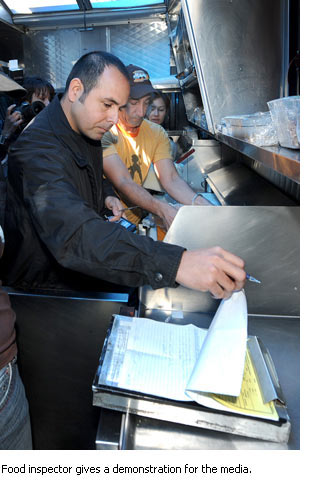 In January, Los Angeles County’s new letter-grading system took effect for mobile food vendors with the goal of making it easy for curbside diners to find out whether their favorite truck is passing muster with the Public Health department.
In January, Los Angeles County’s new letter-grading system took effect for mobile food vendors with the goal of making it easy for curbside diners to find out whether their favorite truck is passing muster with the Public Health department.
Today, public health officials demonstrated what goes into an inspection, using the popular Grilled Cheese Truck as an example. (It passed with a perfect 100%.)
“Once again, Los Angeles County is at the vanguard of the food safety industry,” Supervisor Zev Yaroslavsky said in helping to kick off the demonstration. (See press conference here.)
The ordinance to extend restaurant-style letter grades to food trucks, the first of its kind in the nation, was approved by the Board of Supervisors last October.
There are currently about 6,000 permitted food trucks in the county. From their construction site and factory yard origins, the trucks in recent years have expanded to serve a new clientele hungry not just for tacos and hot dogs but also for more exotic delights like Indian snacks served “desi” (curbside) style or Asian fusion plates.
Still, one of the trucks’ major assets—mobility—had also posed a potential headache for customers wondering who owns and operates the trucks, who inspects them, and whether their food is safe to eat.
Even before the advent of letter-grading, food trucks—like other restaurants in Los Angeles County—were subject to inspection and evaluation by public health authorities. (Here’s the detailed food-truck inspection guide, and all inspection records must be made available to customers upon request or posted online here.)
County officials worked closely with the Southern California Mobile Food Vendors Association in refining the new program; here’s the list of their members. Many of them have websites, Facebook pages and Twitter feeds to keep current and potential new customers up to date on schedules and routes.
Meanwhile, as food trucks’ visibility has increased, conflicts have sometimes cropped up between the mobile facilities and brick-and-mortar restaurants.
A task force convened last fall recently offered a series of recommendations to address concerns on both sides.
At today’s demonstration, Dr. Jonathan E. Fielding, the county’s director of Public Health, said the new food truck letter-grading program builds on the public popularity of the county’s restaurant program, which went into effect in 1998.
He said the program had proven extremely effective in reducing foodborne illness in the county—a benefit that now has wheels attached.
The video below is from today’s Press Conference – Mobile Food Facility Grading Program Launches in LA County:

Posted 2-3-11
Hop to it for New Year in Chinatown
February 3, 2011
 Come ring in the Lunar New Year and “blow away the cobwebs” (除旧布新) as Los Angeles welcomes the Year of the Rabbit. According to the Chinese zodiac, rabbits defy the law of averages by being uniformly articulate, talented and ambitious. But no matter what your sign or personal attributes, you’ll be welcomed at upcoming celebrations downtown.
Come ring in the Lunar New Year and “blow away the cobwebs” (除旧布新) as Los Angeles welcomes the Year of the Rabbit. According to the Chinese zodiac, rabbits defy the law of averages by being uniformly articulate, talented and ambitious. But no matter what your sign or personal attributes, you’ll be welcomed at upcoming celebrations downtown.
This year’s don’t-miss festivities include the 112th Annual Golden Dragon Parade and the Nite n’ Day Festival. Parade floats and dragons will romp through Chinatown on February 5 at 1 p.m., ending with a fireworks display. Organized by the Chinese Chamber of Commerce, parade activities include arts & crafts workshops, face painting, candy sculpture and a ping-pong tournament. More than 110,000 spectators are expected to line the parade route.
The following weekend’s Nite n’ Day Festival, organized by the Los Angeles Firecracker Run Committee, is set in Chinatown’s Central Plaza at 927 North Broadway. It will take place on Saturday, Feb.12 from 10 a.m. to 6 p.m. and Sunday, Feb. 13 from 10 a.m. to 3 p.m. The music, dancing, and entertainment are free, and vendors will supply a variety of culinary delights.
For active types, a traditional Lion Dance and the lighting of 100,000 firecrackers will mark the beginning of the 33rd Annual Firecracker 5/10k Run at 8:00 a.m. on Sunday, Feb. 13. Be sure to arrive early for registration and a 7:30 a.m. warm-up with the Laker Girls. The Kiddie Run starts at 9:45 a.m. For cyclists, a scenic Bike Ride will take place on Saturday, Feb. 12 at 9:00 a.m., with registration starting at 7:30 a.m. A full schedule of events is available here. All runs and rides benefit nonprofit organizations, so register and lace ‘em up to support the community.
There will be street closures and crowds, so use Metro’s convenient trip planner to travel without hassle. Get off at the Chinatown stop of the Metro Gold Line and you will be just steps from the fun.
In joining the holiday celebration, you will be participating in a rich tradition that dates back to about 2600 B.C. Whether you attend or not, “congratulations and prosperity” (恭喜发财) to all of you in the year 4708!
Posted 2/3/11
Our new man in Sacramento
February 2, 2011
For more than a decade, Los Angeles County’s point man in Sacramento has been one of the oldest hands in the state capitol. When Dan Wall announced his retirement late last year as the top lobbyist for the county, he was capping a 37-year resume that dates to Ronald Reagan’s gubernatorial administration. Wall isn’t joking when he says he’s been lobbying since the first time Jerry Brown was governor.
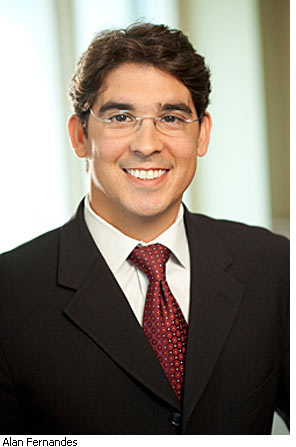 So filling his shoes was no easy task, says Assistant Chief Executive Officer Ryan Alsop. “We searched for months and months.” And Alsop found his man just in time for a budget season that promises to be of historic importance.
So filling his shoes was no easy task, says Assistant Chief Executive Officer Ryan Alsop. “We searched for months and months.” And Alsop found his man just in time for a budget season that promises to be of historic importance.
Alan Fernandes, come on down.
Fernandes, a 36-year-old lawyer and father of two from Davis, comes to the county from the well-known Sacramento law firm of Nielsen, Merksamer, where he has represented public sector clients for nearly 10 years.
With a bachelor’s degree in political science from UC Davis and his law degree from the McGeorge School of Law at University of the Pacific, he is currently the lobbyist for San Diego, Riverside, Contra Costa and Marin counties. He also has served on the Business and Economic Development Commission for the City of Davis, where he not only helped turn the city’s collection of rare and antique bicycles into the California Bicycle Museum, but also helped the city land the formerly New Jersey-based U.S. Bicycling Hall of Fame.
“Alan will be a great asset to the county in Sacramento,” said Alsop, who lauded Fernandes’ “honesty, knowledge, great work ethic and communications skill.”
And he’s going to need every ounce of that talent.
With California facing a $25.4 billion budget gap, Gov. Jerry Brown has proposed transferring the cost of many services from the state government to the counties, offering local governments more autonomy, but also potentially leaving them with much greater financial obligations that might not be underwritten in the long term.
Los Angeles County, for example, has estimated that Brown’s realignment plan could force it to absorb many millions of dollars in new costs and overwhelm the county’s already over-crowded jail system.
“I think we’re at a point where the restructuring of the state and local relationship is needed,” Fernandes said, speaking by phone between capitol meetings. “If it’s done right, it can actually serve the residents of California a lot better. But if done wrong, it could actually set us back even further—if that’s even imaginable.”
 Fernandes called the most recent election “one of the most important in California since Proposition 13. “The results are going to put us in situations via realignment that could restructure government,” he said. “I applied for this job because I want to be a part of that.”
Fernandes called the most recent election “one of the most important in California since Proposition 13. “The results are going to put us in situations via realignment that could restructure government,” he said. “I applied for this job because I want to be a part of that.”
But, he added, he also applied because Los Angeles County is in a class by itself as a player in Sacramento. “Los Angeles is a third of the state, at least.”
That’s high praise coming from a Northern Californian. In the interest of full disclosure, however, Fernandes did admit one potentially serious conflict:
“I’m going to be completely up-front,” he confessed, laughing. “I’m a big San Francisco Giants fan.”
The appointment to the $175,000 a year post is expected to become official on February 10. After a transitional period, Wall, 64, will finally retire.
“I have projects,” said Wall, who, in true county fashion, lives in unincorporated Sacramento County. “I have a 1961 Triumph TR 3, a little red sports car, and I’m going to put that in working order. I’m going to do a little wine cellar at home because I like wine. I want to play the guitar. And we want to go to Italy, my wife and I. I think after 37 years working in this process, it’s time for a little change of view.”





























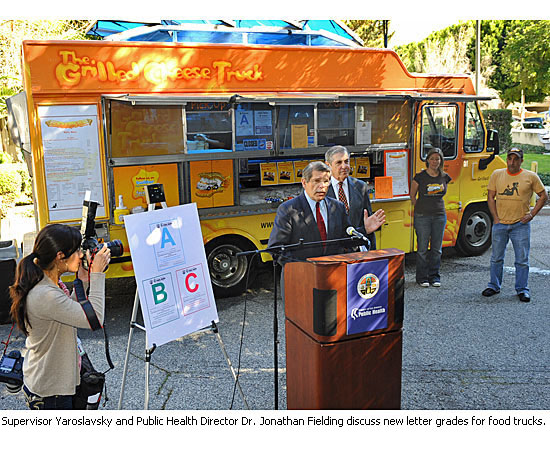





 Check for the latest closure information
Check for the latest closure information








